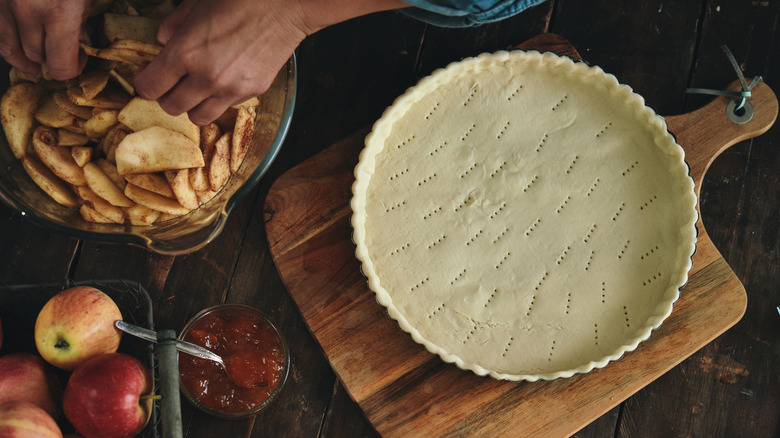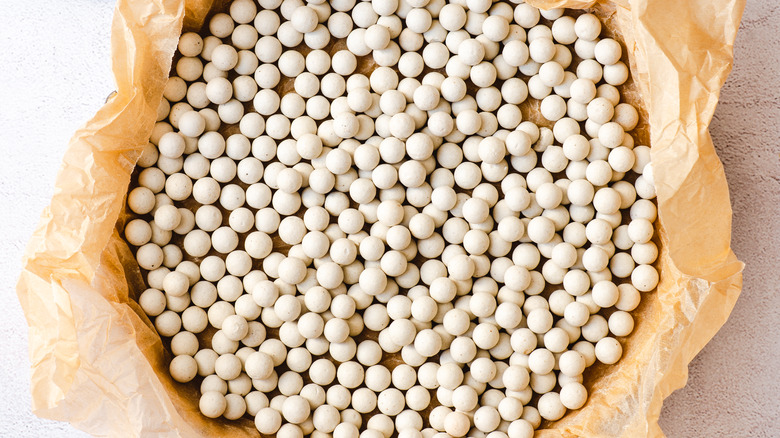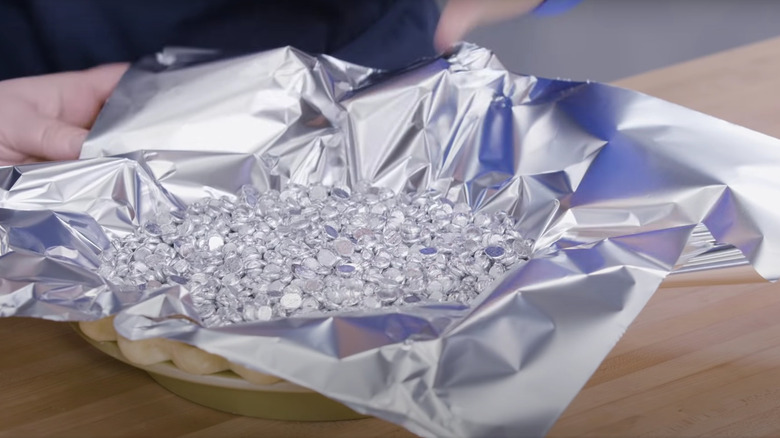Metal Vs Ceramic Pie Weights — Which Is Better?
The road from pie lover to pie baker is often short but steep. Even if you're new to the world of pie baking, you probably already know that the hardest element — and arguably the most important — to master in this domain is the crust. While crust recipes themselves are simple enough, it takes real work to avoid every pie baker's worst nightmare: a soggy bottom. To ensure your crust is firm and uniform in thickness every time — especially when baking with high-moisture fillings like frozen fruit for homemade pies — pie weights are your new best friend.
Once you commit to this investment, you'll still have an important decision to make: What type of weights are best for you? While there are versatile pie weight options, two of the most popular contenders on the market are metal and ceramic weights. They each have their pros and cons to consider, but ceramic pie weights stand a cut above for a few key reasons. Not only are they great at creating gorgeous, even crusts, but they won't get so hot as to expedite bake times like metal weights will. And while they do get hot, they pose less of a burn risk than their metal counterparts, because they don't distribute surface heat as effectively as metal options do. Safety is key!
Why ceramic weights get our vote
Like metal pie weights, ceramic weights are great at keeping our crusts from puffing and bulging as they bake. Ceramic weights are small balls that fill your whole pie pan, supporting dough on all sides as it bakes. Ceramic stores heat well though it has a lower thermal conductivity to metal, so you don't need to worry as much about them influencing bake times. Their shape allows air to circulate between them in the oven, leaving you with a super evenly baked crust. Beyond all that, they are easy to clean and nonporous, meaning they won't take on any strong flavors during use that would influence how your crust tastes.
The downside? They're more fragile than metal and may crack if handled roughly. However, since you're meant to lay parchment paper on your crust before using ceramic weights, as long as you're gentle, you shouldn't have any issues. While ceramic weights are more expensive than some metal options on the market, keep in mind that some of the inexpensive metal options aren't heavy enough to properly weigh down a crust.
The case for metal pie weights
Now, just because they come in second in our evaluation doesn't mean metal pie weights are without merit. Metal weights come in two forms — individual metal balls or the beloved pie chain. Many bakers love these options, touting benefits like producing the most even crust, if sufficiently weighted and distributed, and being dishwasher safe.
The downside of metal pie chains is they primarily apply pressure to the bottom of the crust, occasionally resulting in crust walls puffing up or collapsing. Metal also has great heat conductivity, meaning that it'll get hot quickly and help bake your crust from the top — but you'll need to monitor it to make sure it doesn't bake too quickly and be very careful not to burn yourself on the very hot metal once you've removed it from the oven. If you choose this material, be sure to use a product specifically designed for this purpose — this will ensure the metal is oven-safe, food-safe, and won't rust with use.
So no matter which material you choose, look for a product that has enough weight and will fill a deep 10-inch pie pan (two pounds should suffice). This will ensure your pie crusts will never be puffy or uneven ever again.



